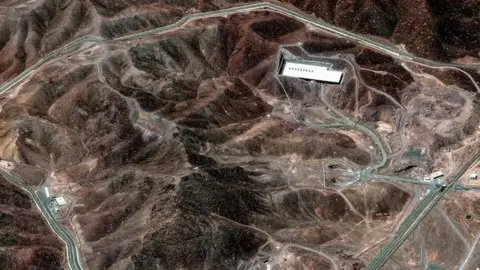The recent military actions taken by the United States against Iranian nuclear facilities have stirred a considerable amount of attention and concern on a global scale. These strikes, ordered by President Donald Trump, are described as a pivotal escalation in the long-standing tensions between the United States, Iran, and Israel. As the situation continues to unfold, the implications of these attacks extend far beyond the immediate military objectives and threaten to reshape the geopolitical landscape of the Middle East.
On June 22, 2025, President Trump announced via Truth Social that American forces had successfully targeted and struck three critical nuclear sites in Iran—Fordow, Natanz, and Esfahan. Fordow, in particular, is noteworthy as it is a clandestine enrichment plant situated within a mountain, playing a significant role in Iran’s nuclear ambitions. The President emphasized that all military aircraft involved in the operation had safely returned to bases outside of Iranian airspace, highlighting the strategic execution of the military operation.
The Israeli government, which has been concerned about Iran’s nuclear capabilities, indicated that it was in “full coordination” with the US in planning these military actions. This partnership reflects the deepening ties between the two nations in addressing perceived existential threats. Conversely, Iranian officials have issued stern warnings regarding potential retaliation, suggesting that Iranian military assets could target US interests in the region. Such a reaction could open the doors to a broader conflict, underscoring the severe regional implications of the US strikes.
The events that led to this dramatic escalation began with a surprise attack from Israel on June 13. Israeli Prime Minister Benjamin Netanyahu justified the airstrikes aimed at various Iranian military and nuclear installations by asserting the necessity to dismantle Iran’s progressing nuclear program. In response, Iran launched a barrage of rockets and drone strikes against Israel, initiating an exchange that has unfolded into an extended air war over the course of more than a week.
In the wake of these developments, questions arose regarding the legal framework governing military action. Under US law, while Congress retains the power to declare war, the President, as the Commander in Chief, has the authority to deploy troops and conduct military operations in defense of national interests without a formal declaration of war. Trump’s previous military actions, like the airstrikes in Syria, have set precedents for unilateral military interventions, and similar considerations are likely to be at play in the current context.
From a technical standpoint, the US military employed the GBU-57 Massive Ordnance Penetrator (MOP) in these strikes, given its ability to penetrate deep underground structures like those at Fordow. Weighing 13,000 kg, the MOP is developed to reach substantial depths of concrete and soil, although experts express uncertainty about its effectiveness against facilities situated as deep as 90 meters below the surface.
While the initial strikes have garnered attention, reports on the ground in Iran indicate that the full impact of these attacks remains unclear. Iranian state media reported that the crucial nuclear sites had been evacuated prior to the strikes, suggesting that the damage might not be as significant as anticipated. However, the confrontation has already brought human cost, with Iran stating that hundreds have lost their lives throughout the conflict with Israel.
As tensions simmer, potential avenues for Iranian retaliation could include targeting US military installations throughout the Middle East or disrupting global oil supplies via the strategic Strait of Hormuz. This scenario poses substantial risks that could lead to larger confrontations, drawing in other regional players and exacerbating an already delicate situation.
In summary, the US strikes on Iran’s nuclear facilities mark a critical moment in ongoing hostilities that intertwine multiple nations, complex relationships, and longstanding disputes over nuclear ambitions. Each development in this unfolding crisis could lead to significant geopolitical shifts, impacting not only regional stability but global security perspectives. The world now watches closely, apprehensive about the next steps that both nations will take in a high-stakes game of military and political maneuvering.



